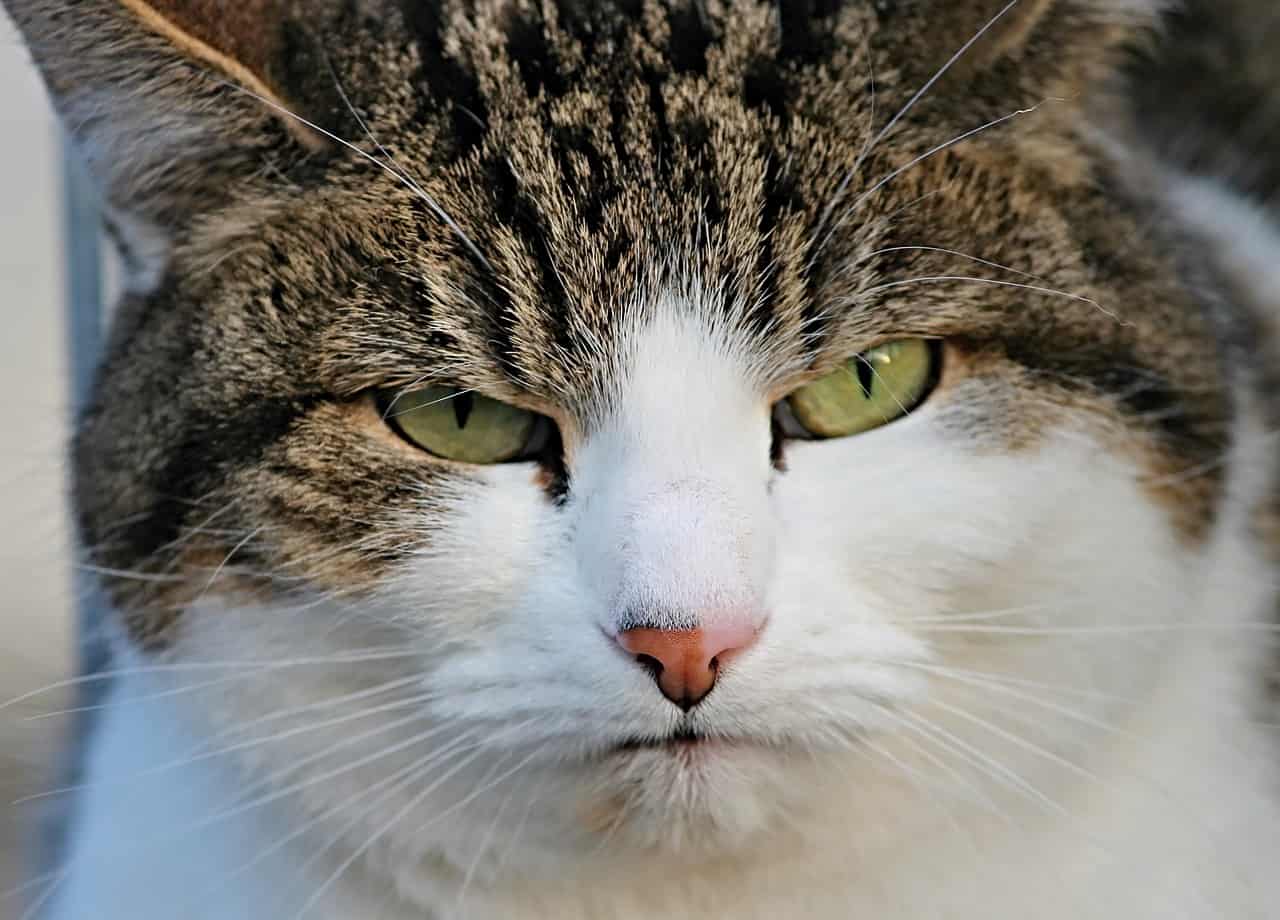
27
DecGrumps, Cranks, and Misanthropes
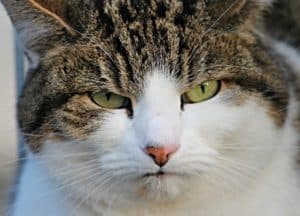 Can you stand to read books or watch television programs or movies with unlikable protagonists? It certainly is challenging to connect with characters who do, say, or believe things that breach cultural norms, don’t meet our standards of courteousness, or are just plain wrong! It’s easy to distance ourselves as readers when we encounter characters who clearly take delight in hurting others and call them villains. But what about characters who are unlikable in the middle of very sympathetic situations, like navigating difficult life circumstances? It’s more difficult to forgive missteps as a reader when complicated characters don’t meet our expectations, even when they are trying their best.
Can you stand to read books or watch television programs or movies with unlikable protagonists? It certainly is challenging to connect with characters who do, say, or believe things that breach cultural norms, don’t meet our standards of courteousness, or are just plain wrong! It’s easy to distance ourselves as readers when we encounter characters who clearly take delight in hurting others and call them villains. But what about characters who are unlikable in the middle of very sympathetic situations, like navigating difficult life circumstances? It’s more difficult to forgive missteps as a reader when complicated characters don’t meet our expectations, even when they are trying their best.
Author Toni Morrison once wrote, “The ability of writers to imagine what is not the self, to familiarize the strange and mystify the familiar, is the test of their power.” I take Ms. Morrison’s quote to mean that good authors should seek to challenge their readers by helping them question their own assumptions and showing them how their own circumstances shape judgments about others through creating fictional people. Creating unlikable main characters is a great way for writers to explore difficult themes in an otherwise unassuming story about everyday life. Grief is a commonly explored theme in fiction, and these types of stories often produce the most challenging characters to connect with, even though readers might empathize with their terrible losses.
Nora Webster is Colm Toibin’s poignant character study of a woman widowed in her forties who must continue on with everyday existence for her children. It was the subject of a recent book discussion at the library and people’s responses to the titular character prompted me to reflect on how I respond to difficult characters. Toibin presents Nora as a reserved woman whose husband was the center of her world. She had no other interests or work beyond being a wife and a mother in a very conservative Ireland of the late 60s and early 70s. She’s completely unsure of herself, often impulsive and resentful of the well-meaning attempts of friends and family to help her. It’s so tempting to judge her as a character and, in fact, many book discussion participants railed at her, wondering “What’s the matter with her? Why does she act that way?” But Toibin is a clever author and provides glimpses of how she lived her life before her husband died and how different her inner emotional life is now that he is gone. It forces the audience to ask themselves the uncomfortable question, “How would I feel in that circumstance?” Many of us would like to think they would do better, but a good author might make us less sure.
Most of us know David Sedaris for his darkly comic essay collections that center on his family, his childhood, and his exploits as a traveling author. Calypso, his latest effort, has a dark undercurrent of grief as he illustrates his complicated relationships with his siblings, especially his sister Tiffany who died by suicide in 2013. Calypso chronicles his efforts to gather his family together for vacations and holiday celebrations in a hastily-purchased beach house in North Carolina. Sedaris never shrinks away from casting himself as an unlikable narrator of his own stories, often admitting his flaws and his mistakes in dealing with his sister and the rest of his family. Once again, readers can choose to focus on how differently they might react, but Sedaris’ honesty and humor keep him relatable and encourage us to reflect on our own foibles.
Sometimes unlikable characters engage in bizarre and outlandish behavior so the author can explore how past trauma affects their reality. Maria Semple’s Where’d You Go, Bernadette chronicles a stay-at-home mother’s attempts to assert herself after completely losing all of her social and professional confidence. Bernadette is the cranky, misanthropic mother of Bee, a precocious middle schooler and the only person Bernadette can stand. Her behavior spins out of control as she tries to connect with her daughter and plan a family trip to Antarctica. Semple’s plot is far-fetched and absurd, but it reveals Bernadette’s intense pain about her massive failures as an architect and the miscarriages she endured before Bee’s birth.
Here’s my professional advice if you run into a character you just can’t stand: stick with the book. Yes, life is too short to read bad books, but if you find other parts of the book or other characters intriguing, enjoyable, or valuable, keep engaging with the unlikable main character. Secondly, ask yourself why you harshly judge a fictional person. Is it because this character does incomprehensible things? Try to put aside your own viewpoint and give the character the benefit of the doubt as you would a good friend. It might make their perspective more clear and let you access the story in a way you couldn’t have if you insisted on applying your own judgments to the book. If all authors only wrote characters we could relate to and cheer for, reading would not only be boring, but also lack any artistic merit. Books should and can comfort us, inform us, and reveal things to us if only we let them.
Kate Tigue is the Head of Youth Services at the Morrill Memorial Library. Read her column in the December 27, 2018 edition of the Norwood Transcript and Bulletin.

20
DecAn Unlikely Advocate of Aromatherapy
 Aromatherapy became an interest of mine, oddly enough, after attending a technology conference. A few years back, I was lucky enough to attend the “Computers in Libraries” conference in Virginia. As an Information Technology Librarian, I have always loved attending this conference. It’s very exciting to see what other libraries around the country (and beyond!) are doing with technology to better serve their communities.
Aromatherapy became an interest of mine, oddly enough, after attending a technology conference. A few years back, I was lucky enough to attend the “Computers in Libraries” conference in Virginia. As an Information Technology Librarian, I have always loved attending this conference. It’s very exciting to see what other libraries around the country (and beyond!) are doing with technology to better serve their communities.
After my first day at the conference, I was just exhausted. There is so much information to process, and I had two more days to go, so I went back to the small AirBnB that I had rented to relax. On the nightstand next to the bed, my hosts had left an essential oil diffuser with some instructions. I was totally unfamiliar with diffusers and even essential oils at that point, but filled it up with water, put some drops of peppermint oil in, and started it up. It was SO relaxing! I immediately texted my wife and told her about it. She was really excited and mentioned that she had been eyeing several different diffusers online, but thought that I would think she was crazy! When I got home, we ordered a really nice diffuser from Amazon and hit up our local health food store for the oils to go with it. My wife and I have incorporated it into our nightly routine, and after the kids are in bed, we put on a good show and a nice relaxing essential oil blend in the diffuser to unwind. When the kids are particularly energetic near bedtime, we also use a roll-on combination of lavender and a carrier oil (oils should never be applied directly to the skin!) to help calm them down- it works wonders!
As I began to do more research, I learned that diffusing essential oils is part of a holistic healing treatment known as “aromatherapy.” In aromatherapy, inhaling the steam from essential oils stimulates the olfactory system, and the beneficial molecules from the diffused oil then enter into the lungs, where they are then dispersed throughout the body. When the molecules reach the brain, they stimulate (or relax) the emotions. Diffusing different essential oils will, of course, produce different scents, but depending on the essential oil (or oil mixtures) that you use, you can also improve your mood, boost your immune system, improve sleep quality, treat headaches and migraines, and help with relaxation and meditation.
The library offers some great books on essential oils and aromatherapy, in particular through our Hoopla app, which will give you instant access to a plethora of useful titles on the subject. Perhaps one the best and most comprehensive offered through the Hoopla app is “The Complete Book of Essential Oils and Aromatherapy” by Valerie Ann Worwood. Worwood’s book delves deep into not only the many essential oils that exist, but is also organized into chapters that give essential oil recommendations for specific individuals (men, women, children, athletes, travelers, etc.). Worwood further divides each individual type into a specific ailment or consideration that might pertain to them, for example, babies and young children should only be exposed to certain types of diffused oils and in specific ratios, due to their extra sensitive skin, so the book gives a good overview of what oils are appropriate for which age type to assist caregivers in diffusing appropriate oil types.
If you are new to diffusing essential oils, or essential oils in general, my best recommendation to start with is “the mother of all essential oils:” lavender. Lavender is a great essential oil that has a lot of utility and health benefits. It’s safe for babies (when diluted) and some recent evidence
shows it has been effective in reducing the symptoms of colic in babies (take note, restless parents!). It has a very flowery aroma, and is an antiseptic, antibiotic, and antidepressant. Lavender can also easily mix well with other essential oils like rose, grapefruit, and sweet orange, which smell great and have health benefits of their own. If properly diluted, lavender can also be applied topically to heal rashes and burns.
I have tried many different essential oils and oil blends, and I have a lot of favorites, but my personal favorite, both in terms of scent, health benefits, and mood relaxing properties, is frankincense. In case you ever wondered why one of the Magi presented frankincense to the baby Jesus; it is because it was highly prized due to its powerful rejuvenating and revitalizing qualities (perhaps you can also see the symbolism of the gift). Frankincense is a natural disinfectant that boosts the immune system, refreshes skin, can ease respiratory infection symptoms, and is, to me, the perfect essential oil for meditation. Frankincense is the yin to lavender’s yang. Lavender is soft and floral, frankincense by contrast, has a strong woody, smoky, earthy scent to it, which I really enjoy, but might not be to everyone’s liking. You can learn more about frankincense, and other seasonally relevant scents, myrrh, pine needle, mistletoe, and others from the article “Gifts of Healing… from Herbs of the Season” which can be found though our Gale Database section on the library website.
I hope that you check out what the library has to offer on aromatherapy, learn more, and try diffusing some oils yourself. As a thirty-five year old man, I never thought that I would be writing a column about essential oils, and my discovery of aromatherapy was very unlikely to say the least, but I am a believer in the benefits that it can offer. Remember, if you are new to using our Hoopla app, or would like assistance in setting it up, you can schedule a one-on-one tech appointment here at the library. We are happy to get you connected and on your way to learning more!
Brian DeFelice is the Technology Services Librarian at the Morrill Memorial Library in Norwood, MA. Look for his article in the December 19, 2018 edition of the Norwood Transcript and Bulletin.
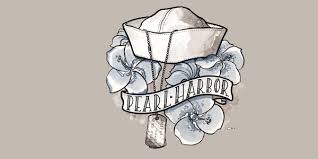
13
DecWar in December
 December 7, 2018 marked the 77th anniversary of the Japanese attack on Pearl Harbor which led to the United States’ entry into World War II. The US involvement started in 1941 and lasted until the end of the war in 1945. According to US Department of Veterans Affairs statistics, 496,777 of the 16 million Americans who served in World War II are alive in 2018. We are losing 372 veterans per day.
December 7, 2018 marked the 77th anniversary of the Japanese attack on Pearl Harbor which led to the United States’ entry into World War II. The US involvement started in 1941 and lasted until the end of the war in 1945. According to US Department of Veterans Affairs statistics, 496,777 of the 16 million Americans who served in World War II are alive in 2018. We are losing 372 veterans per day.
My 96-year-old father-in-law, Bill, is one of the surviving 496,777 WW II veterans. Although he now sometimes forgets little things, he does remember Pearl Harbor and D-Day vividly. He was not in the military at the time of the attack on Pearl Harbor, but he had a vital part in D-Day (June 6, 1944), the day when allied forces invaded northern France by means of beach landings in Normandy.
Bill was a Seabee and responsible for the barges that were put up on the beach to form landing causeways. Food, tanks, medical supplies, ammunition, tanks, etc. were delivered for days, weeks and months before the invasion. The Seabees periodically dove for cover as they were targeted by enemy machine and artillery fire. He witnessed the invasion on June 6th when “soldiers were mowed down and losses were high.” He, himself, was treated for shrapnel wounds. The invasion was one of the largest amphibian military assaults in history and required extreme planning. It was the beginning of the end of the war in Europe.
This summer Bill was visiting us from Florida at the same time as my 10-year-old grandson, Kye, had traveled up from Oregon. One day I found Bill on the sofa telling Kye about his wartime experiences. My daughter had the foresight to video tape the conversation, which was more of a monologue with Kye interjecting questions every now and then. What a history lesson for a 10-year-old boy!
For those children or young adults who are not fortunate to have a great-grandfather to tell the eyewitness tale, there are books that will suffice.
Children’s books, “What was Pearl Harbor?” and “What was D-Day?” by Patricia Demuth, present an easy to read narrative with pictures of the actual events. Elementary school children will find these interesting to read. “True Stories of D-Day” by Henry Brook tells true stories of heroism and drama told by men of different nationalities who took part in the invasion. It is a book appropriate for junior high or high school students. The stories are written so that the violence of war is not emphasized.
For adults, the best book I have read about the attack on Pearl Harbor is “All the Gallant Men: An American Sailor’s Firsthand Account of Pearl Harbor” by Donald Stratton. It is a powerful memoir of the day Stratton, then a 19-year-old Seaman, was aboard the USS Arizona when the explosives below his battle station ignited during the Japanese air attack. He was burned over two-thirds of his body, but he miraculously survived by hauling himself hand over hand across a rope tied to a neighboring ship.
Stratton begins his story by telling of his modest Nebraskan beginnings during the Great Depression and the lure of the Navy for a steady paycheck and a view of the world. After basic training in September, 1940, he was assigned to the battleship USS Arizona and sailed into Pearl Harbor. His job aboard the ship was to operate the five port-side antiaircraft guns and that was where he found himself at the beginning of the attack on Pearl Harbor. He found the exercise futile since the dive bombers were too low for their guns and the horizontal bombers were too high. He fired aimlessly until they were out of ammunition and a final blast to the ship made him find his way through the smoke and fire to grab a line and haul himself to safety on the neighboring vessel.
Strafford’s keen memory of all that happened leading up to, during, and after the Pearl Harbor attack is extraordinary, especially since he wrote this memoir at the age of 94. Reading it is like viewing a movie as the action unfolds.
Especially interesting are Strafford’s reflections and analyses of the event in a historical context. His views of what went wrong included 4 premises: we lacked foresight, we communicated poorly, we were overconfident and we were not alert. He even explains a parallel between December 7, 1941 and September 11, 2001.
A comprehensive reading of D-Day is the book, “Voices of Valor: D-Day, June 6, 1944” by Douglas Brinkley and Ronald J. Drez. This book includes 2 audio CDs with oral histories from D-Day veterans, and many pictures amidst the detailed historical text.
For the United States, World War II lasted almost 4 years. The attack on Pearl Harbor and the D-Day invasion are vastly written about and studied in American History. As with all life changing historical events, we must not forget them.
In Donald Stratton’s words, “The great lesson we too often learn from history is that we are so prone to forget the past. And there is a price we pay for our forgetfulness.” I am sure my father-in-law would agree.
Norma Logan is the Literacy Volunteer Coordinator at the Morrill Memorial Library in Norwood, MA. Look for her article in the December 13, 2018 edition of the Norwood Transcript and Bulletin.
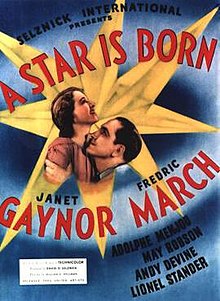
6
DecA Star is Born: One More Look
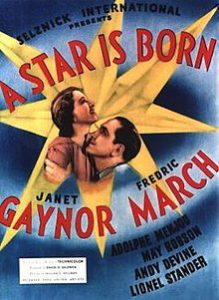 Aashiqui 2 is the 2013 Bollywood version of A Star is Born. With subtitles in English, the musical is a lovely remake. It stars exceptionally handsome Aditya Roy Kapur, and the even more beautiful Shraddha Kapoor. The music is enchanting, and both conventional Bollywood cinematography and delightful chemistry between the two actors received much critical praise upon its release. Translated to the English “love makes one live,” the Hindi Indian film matches the 1976 musical closely – it is the intense and tragic story of two musicians, Rahul Jaykar (or R.J.) and Aarohi Keshav Shirke.
Aashiqui 2 is the 2013 Bollywood version of A Star is Born. With subtitles in English, the musical is a lovely remake. It stars exceptionally handsome Aditya Roy Kapur, and the even more beautiful Shraddha Kapoor. The music is enchanting, and both conventional Bollywood cinematography and delightful chemistry between the two actors received much critical praise upon its release. Translated to the English “love makes one live,” the Hindi Indian film matches the 1976 musical closely – it is the intense and tragic story of two musicians, Rahul Jaykar (or R.J.) and Aarohi Keshav Shirke.
When Bradley Cooper took over the project as director, he hoped his fresh version of A Star is Born – of rising and descending stars – would be a box office success. Although Clint Eastwood had envisioned American songwriter and singer Beyoncé as the leading lady of the next remake, it was upon listening to pop singer Lady Gaga at a benefit concert that Cooper knew that he had found his star in Stefani Joanne Angelina Germanotta, Lady Gaga’s real name.
The 2018 version of A Star is Born won’t disappoint those who will fall in love with the soundtrack of 17 original songs or music. Viewers won’t be turned away by the close-ups of either character – Jackson Maine (Cooper) or Abby (Lady Gaga.) For those of us who loved any of the A Star is Born versions, this is as good as the first time.
The foundation for all the versions of A Star is Born was laid in 1932 with the film What Price Hollywood, based on a novel by journalist Adela Rogers St. Johns. St. Johns had been detailing Hollywood’s legends for several decades, including the famous meteoric rises and painful, slow descents of its stars. Her exclusive look fuses details of the relationship of two Tinseltown notorieties (silent superstar Colleen Moore and alcoholic producer, John McCormick) and the tragedy of self-destruction of Hollywood producer Tom Forman. (Forman killed himself the night before his next film was set to begin production in November 1926.) Others claim that the film was based on the turbulent relationship of actors Barbara Stanwyck and Frank Fay, whose marriage slipped apart as Stanwyck’s career rose and Fay’s declined, due in most part to Fay’s alcoholism.
Constance Bennett and Lowell Sherman star in this version, a black-and-white film directed by George Cukor and co-produced by David O. Selznick. Anyone who has seen any version of A Star is Born will acknowledge the story – an aspiring actress meets the man (in this version a director) who can open doors for her. The starlet (Mary Evans) rockets to the top, winning an Academy Award; the drunk (Max Carey) disrupts her acceptance speech, and eventually commits suicide.
Several years after What Price Hollywood was released, producer Selznick approached director Cukor and asked him to direct another version – the story that is now considered the original A Star is Born. Cukor speculated it would be seen as a plagiarized effort and stayed away. (Interestingly, no legal action was ever taken by the studio.)
This 1937 film, A Star is Born, was released in marvelous Technicolor and starred Janet Gaynor and Frederick March. A North Dakota farm girl is convinced by her grandmother to leave for Hollywood and the grandmother funds her dream. Girl meets guy with connections; girl shows talent; girl rises to the top. Guy then self-destructs, and in this version, and every other one, commits suicide.
In 1954, Cukor finally agreed to direct the first remake of the 1937 musical version in which Judy Garland and James Mason starred. Garland was back from a short retirement and was conveniently married to the film’s producer Sidney Luft. Controversy plagued production – Garland was typically difficult – it was just fifteen years before her suicide in 1969. Before its final release, 30 minutes of the film were cut to make it shorter so that more audiences could view it. The actual film was tragically destroyed when it was melted down for its silver content and was forever lost. A director’s cut version available on DVD includes the audio of the cut scenes while the viewer gazes upon unconvincing studio stills.
Garland and many others believed she would undoubtedly win the Academy Award for A Star is Born. The night of the Oscars, Garland was in the hospital having given birth to her son, Joseph Luft, and film crews were at her bedside for her acceptance speech. In the end, Garland lost to Grace Kelly (The Country Girl). The industry was shocked, and Groucho Marx called it the “biggest robbery since Brinks’.”
In her book, A Star is Born: Judy Garland and the Film That Got Away (September 2018), Judy Garland’s sixty-six-year-old daughter Lorna Luft explains that A Star is Born mimics much of the dark side of Garland’s life and the tumult of stardom and Hollywood. Luft describes the tragic loss – of both the film destroyed and of the award that Garland expected. (Although honored for Wizard of Oz, and nominated twice for A Star is Born and the Judgment at Nuremberg, she never won an Oscar.)
Two decades later, another husband-producer cast his wife in A Star is Born – this time a rock musical. In Jon Peter’s film, Streisand is the aspiring singer and Kris Kristofferson as the musician who discovers her. Kristofferson, as John Norman Howard, is just as risky and rowdy as his alcoholic predecessors played by Frederick March and James Mason. Notably, this Esther is just as talented and quirky as Gaynor and Garland. In the 1976 film, Streisand wins a Grammy – not an Oscar – but Johnny still shows up to ruin the night. He, too, eventually kills himself, this time in a risky car accident after traveling through the desert at 160 miles an hour.
Shortly before the 1954 version of A Star is Born begins AND ends, Norman Maine (James Mason) asks to take one more look at the love of his life, Esther Blodgett (Judy Garland.) From Frederick March to Bradley Cooper, “I just want to have one more look at you,” is like a ribbon that weaves through most, if not all, of this famous film story for nearly the past century.
Take one more look at A Star is Born. Copies of each of the past versions of A Star is Born (including What Price Hollywood) are available through the Minuteman Library Network catalog, as well as Lorna Luft’s biographical story of her mother.
Charlotte Canelli is the Director of the Morrill Memorial Library in Norwood, Massachusetts. Read Charlotte’s column in the December 6, 2018 edition of the Norwood Transcript and Bulletin.

29
NovBook Nutrition: Different Ways to Feed the Brain
 Recently, the staff in the Children’s Room has been noticing a trend in children’s and young adult literature: lots of adults take out and read books traditionally written for young people. This is certainly because literature for kids is now being marketed more widely than ever before. Film producers and directors are mining the rich landscape of books aimed at children to find their next big hit on the silver screen. Some books almost seem to be written with the potential optioning of movie rights in mind. It’s no wonder with all that exposure that our collections in the Children’s room have received more adult attention.
Recently, the staff in the Children’s Room has been noticing a trend in children’s and young adult literature: lots of adults take out and read books traditionally written for young people. This is certainly because literature for kids is now being marketed more widely than ever before. Film producers and directors are mining the rich landscape of books aimed at children to find their next big hit on the silver screen. Some books almost seem to be written with the potential optioning of movie rights in mind. It’s no wonder with all that exposure that our collections in the Children’s room have received more adult attention.
We’ve also noticed authors blur the traditional boundaries between audience and genres. In years past, publishers would help authors focus on what group of people their books were for and in what specific genre their story ideas would fit. More than ever, book plots defy categorization and we end up reading reviews for the next “paranormal historical mystery with a dash of suspense.” These types of unique plots make for a more interesting read and attract more adult readers.
Most importantly, children’s librarians are starting to see a division in the tone of children’s literature. In prior decades, children’s books were written with kids in mind but an author’s prose and themes were often held to adult fiction standards. Madeleine L’Engle’s “A Wrinkle in Time” explores a universal coming-of-age story, but well-written characters and fully developed motifs helped adults engage in this classic novel. In more recent times, there are definitely books that were published with a child audience in mind and speak to directly to how kids really feel and experience reality. Jeff Kinney’s “Diary of a Wimpy Kid” series seems to mirror exactly how kids react when faced with tough ethical decisions. Children respond to Greg Heffley, the flawed main character – the book’s humor and lack of preachy adults to correct bad behavior. Many adults cringe at the lack of moral fiber in these titles but they have also turned so many children into readers that it’s hard to dismiss the power of reliability.
In contrast to Diary of a Wimpy Kid, books like Kate DiCamillo’s “Raymie Nightingale” and “Louisiana’s Way Home” are seemingly marketed to children but have an adult, reflective tone to the narrative. Both novels center around twelve year old girls who experience the loss of an adult family member and changes to the family structure while figuring out what it means to transition from the innocent world of childhood to the more challenging reality of adulthood. Both of these books are beautifully written with poignant characterization and dialogue, but I just don’t think most actual twelve year old girls can actually reflect on their circumstances as maturely as Raymie and Louisiana do. Many children experience the family difficulties both girls endure, but few are able to come to the self-possessed realizations and forgiveness both girls find at the end of their stories. Simply put, adult perspectives are masquerading as unrealistic growth in a juvenile protagonist. It should come as no surprise that both books received rave reviews and awards, but most kids bypass them and head straight to other series that meet them where they are.
There is nothing wrong with either approach in children’s literature, and they each serve a different function. Stories that reflect the true inner emotional life and secret wishes of children will always have a strong pull for most young readers. These books are the sweet treats of the book world; they are sugary, appealing, and go down easy for most kids. Books that have a little more emotional depth and meatier, more complex themes are the good nutrition we feed to kids to help their brains and moral imagination strengthen and grow. These stories stick with kids and are great for reading with others and re-reading as kids grow up. We are more forgiving with adult reading choices, and if we can understand the different purposes and audiences that children’s books can reach, we might be more understanding with kids as well.
Kate Tigue is the Head of Youth Services at the Morrill Memorial Library in Norwood, MA. Look for her article in the November 29, 2018 edition of the Norwood Transcript and Bulletin.
